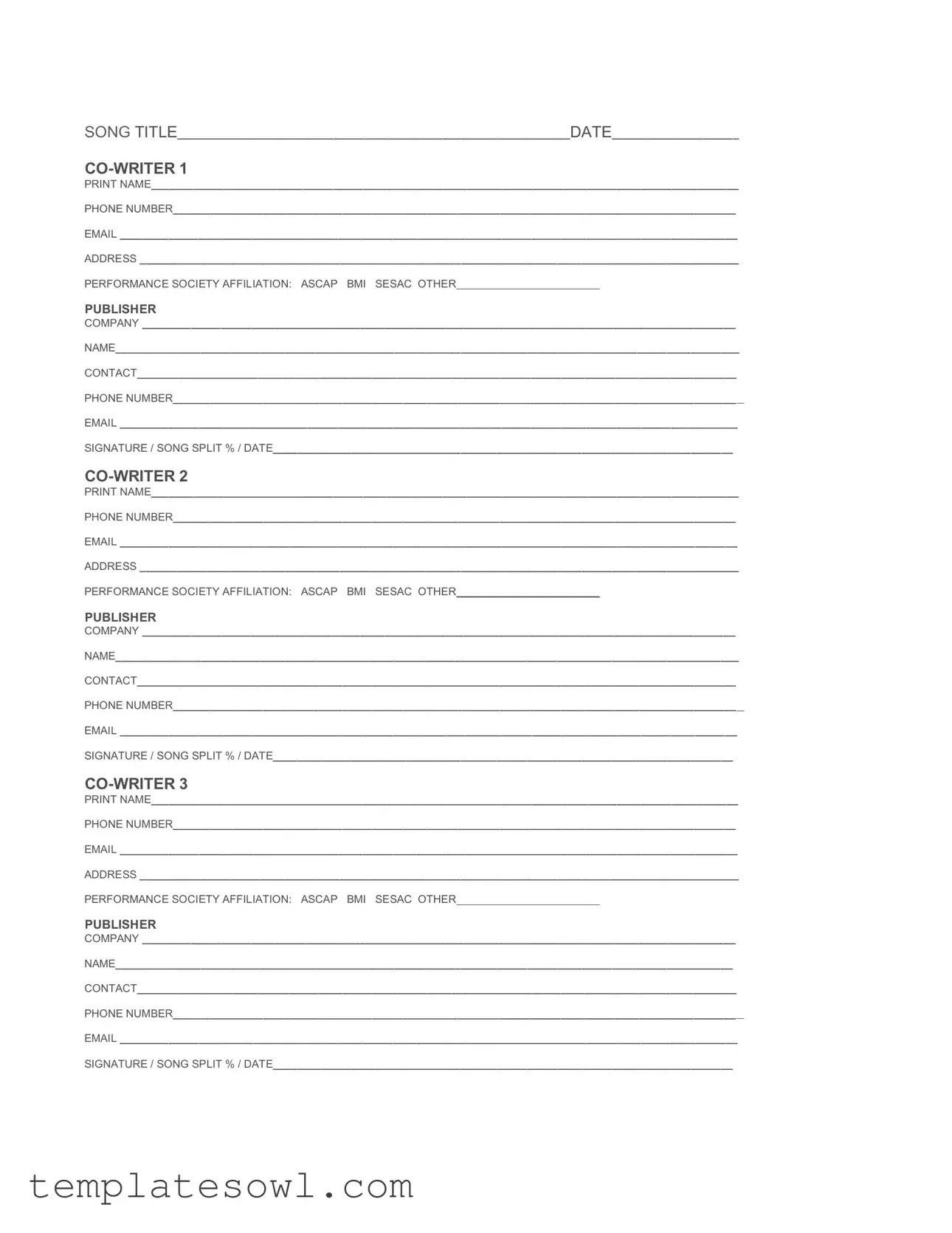SONG TITLE_________________________________________________________________DATE_____________________
CO-WRITER 1
PRINT NAME_________________________________________________________________________________________________
PHONE NUMBER_____________________________________________________________________________________________
EMAIL ______________________________________________________________________________________________________
ADDRESS ___________________________________________________________________________________________________
PERFORMANCE SOCIETY AFFILIATION: ASCAP BMI SESAC OTHER
PUBLISHER
COMPANY __________________________________________________________________________________________________
NAME_______________________________________________________________________________________________________
CONTACT___________________________________________________________________________________________________
PHONE NUMBER_____________________________________________________________________________________________
EMAIL ______________________________________________________________________________________________________
SIGNATURE / SONG SPLIT % / DATE____________________________________________________________________________
CO-WRITER 2
PRINT NAME_________________________________________________________________________________________________
PHONE NUMBER_____________________________________________________________________________________________
EMAIL ______________________________________________________________________________________________________
ADDRESS ___________________________________________________________________________________________________
PERFORMANCE SOCIETY AFFILIATION: ASCAP BMI SESAC OTHER
PUBLISHER
COMPANY __________________________________________________________________________________________________
NAME_______________________________________________________________________________________________________
CONTACT___________________________________________________________________________________________________
PHONE NUMBER_____________________________________________________________________________________________
EMAIL ______________________________________________________________________________________________________
SIGNATURE / SONG SPLIT % / DATE____________________________________________________________________________
CO-WRITER 3
PRINT NAME_________________________________________________________________________________________________
PHONE NUMBER_____________________________________________________________________________________________
EMAIL ______________________________________________________________________________________________________
ADDRESS ___________________________________________________________________________________________________
PERFORMANCE SOCIETY AFFILIATION: ASCAP BMI SESAC OTHER
PUBLISHER
COMPANY __________________________________________________________________________________________________
NAME______________________________________________________________________________________________________
CONTACT___________________________________________________________________________________________________
PHONE NUMBER_____________________________________________________________________________________________
EMAIL ______________________________________________________________________________________________________
SIGNATURE / SONG SPLIT % / DATE____________________________________________________________________________
SONG TITLE_________________________________________________________________DATE_____________________
CO-WRITER 4
PRINT NAME_________________________________________________________________________________________________
PHONE NUMBER_____________________________________________________________________________________________
EMAIL ______________________________________________________________________________________________________
ADDRESS ___________________________________________________________________________________________________
PERFORMANCE SOCIETY AFFILIATION: ASCAP BMI SESAC OTHER
PUBLISHER
COMPANY __________________________________________________________________________________________________
NAME_______________________________________________________________________________________________________
CONTACT___________________________________________________________________________________________________
PHONE NUMBER_____________________________________________________________________________________________
EMAIL ______________________________________________________________________________________________________
SIGNATURE / SONG SPLIT % / DATE____________________________________________________________________________


